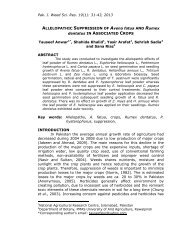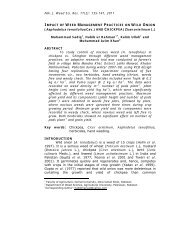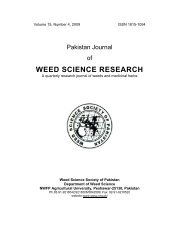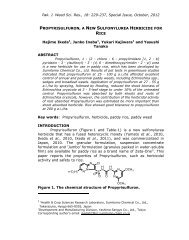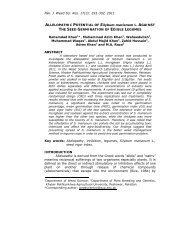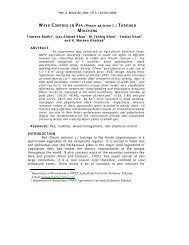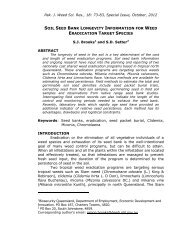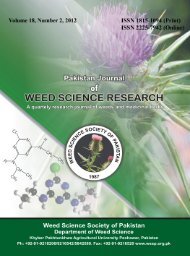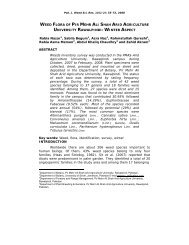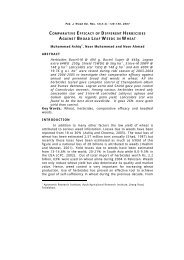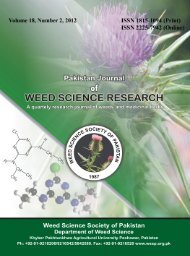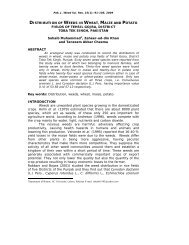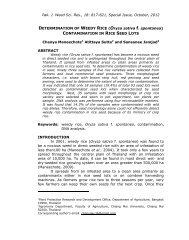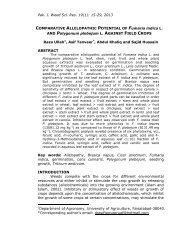A PHYTOSOCIOLOGICAL STUDY OF WEED FLORA ... - Wssp.org.pk
A PHYTOSOCIOLOGICAL STUDY OF WEED FLORA ... - Wssp.org.pk
A PHYTOSOCIOLOGICAL STUDY OF WEED FLORA ... - Wssp.org.pk
Create successful ePaper yourself
Turn your PDF publications into a flip-book with our unique Google optimized e-Paper software.
86<br />
Olugbenga Ebenezer Ige et al. A phytosociological study…<br />
I. cylindrical (L.) Beauv. is an aggressive, rhizomatous<br />
perennial weed with an underground stem that gives out leaves<br />
periodically. It is a member of the family Poaceae and thrives well in<br />
fire prone environments. Its abundance tends to increase with an<br />
increase in its mechanical disturbance. This is one of the most serious<br />
weeds of the cleared forest and guinea savannah zones; especially in<br />
rice, maize, root and tuber crops plantations in Nigeria, though<br />
Macdonald et al. (2006) had reported that this weed does not survive<br />
in cultivated areas of Florida. In addition to competing with crops for<br />
nutrients, light and water, its rhizome, is known to pierce yam tubers<br />
thereby reducing their quality. Seasonal bush burning, a common<br />
practice in this area, induces the plant to flower and set seed thus<br />
contributing to its spread.<br />
T. procumbens L. belongs to the family Asteraceae whose<br />
method of dispersal is by wind. It is a semi prostrate perennial herb<br />
which occurs throughout the tropics and subtropics. It is frequently<br />
found in annual crops, fallow land and occasionally in perennial crops.<br />
Its wide distribution is attributed to its spreading stems and abundant<br />
seed production which is put at between 50- 1500 per plant (Holm et<br />
al., 1997).<br />
Selecting appropriate weed control methods can be very<br />
complex. While weed control principle remain established and<br />
unchanged, the diversity of farming systems can influence both weed<br />
problems and their solutions. It is therefore, difficult to make a list of<br />
recommendation to fit every situation that might arise at any point in<br />
time. However, the integrated weed control approach as canvassed by<br />
several authors (Bond and Grundy 2001; Anderson, 2003; Melander et<br />
al., 2005; Otto et al., 2007) is further stressed.<br />
This study has shown that areas having the same eco-climatic<br />
conditions are likely to support the growth of the same weed species<br />
and the ecological information offered by this study may constitute<br />
strategies to effective weed control.



